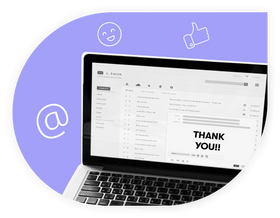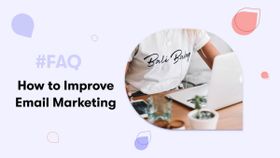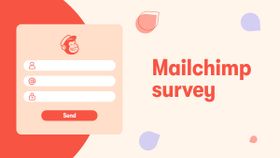Why You’ll Never Reach Full Potential Without Effective Email Sequences
Struggling to turn leads into customers? Discover why email sequences are the missing piece in your marketing strategy.
Published January 29, 2025.

Are your email campaigns failing to convert leads into customers? If so, the issue may not lie with your product or services but with your email strategy—or lack of one. Many businesses overlook the power of well-crafted email sequences, missing opportunities to engage, nurture, and ultimately convert their audience into loyal customers.
Effective email sequences are more than just a series of messages—they’re a way to build meaningful relationships with your audience. From welcoming new subscribers to guiding leads through the decision-making process, these sequences ensure that each interaction has a purpose. Without them, businesses risk inconsistent communication and leaving potential revenue untapped.
This article explores why email sequences are essential for reaching your marketing goals and provides actionable insights to help you create sequences that drive engagement and conversions. Whether you’re looking to streamline your lead nurturing process or maximize ROI, an effective email strategy is the foundation you need to achieve measurable results.
What are Email Sequences?
An email sequence is a series of automated emails sent to a specific group of subscribers over a set period or triggered by particular actions. These sequences are designed to guide recipients through a predefined journey, such as onboarding, nurturing, or re-engagement.
Types of email sequences
There are several types of email sequences, each serving a unique purpose:
Welcome series: Introduces new subscribers to your brand, setting expectations and providing valuable information.
Lead nurturing: Engages potential customers over time, building trust and guiding them toward a purchase decision.
Cart abandonment: Reminds customers of items left in their shopping carts, encouraging them to complete the purchase.
Re-engagement: Reactivates inactive subscribers by offering incentives or highlighting new content.
Why sequences matter compared to one-off emails
Email sequences offer several advantages over individual emails:
Personalization: Sequences can be tailored based on user behavior, providing relevant content at the right time.
Automation: Once set up, sequences run automatically, saving time and ensuring consistent communication.
Increased engagement: A series of emails keeps your brand top-of-mind, leading to higher open and click-through rates.
Improved conversions: By nurturing leads and guiding them through the sales funnel, sequences can lead to higher conversion rates.
In contrast, one-off emails may lack the context and timing needed to effectively engage recipients, often resulting in lower engagement and conversion rates.
Crafting and executing tailored email sequences can enhance your marketing plan, helping to cultivate lasting customer relationships and achieve greater sales success.
The connection between Email Sequences and business potential
Effective email sequences are essential for nurturing leads and converting them into loyal customers. By delivering targeted, timely, and relevant content, these sequences guide prospects through the sales funnel, addressing their needs and concerns at each stage. This approach builds trust and encourages informed purchasing decisions.
How effective email sequences support lead nurturing
A well-structured lead nurturing email sequence provides valuable information tailored to the prospect's interests and behaviors. By consistently engaging with potential customers, businesses can establish a relationship that fosters trust and positions the brand as a helpful resource. This ongoing communication keeps the brand top-of-mind, increasing the likelihood of conversion.
The role in converting prospects into loyal customers
Email sequences play a pivotal role in converting prospects into loyal customers by delivering personalized content that addresses their specific needs and pain points. By providing valuable information and timely offers, businesses can guide prospects through the decision-making process, leading to higher conversion rates and customer retention.
Without effective email sequences, businesses risk missing out on several opportunities:
Lost engagement: Prospects may forget about the brand or lose interest without regular communication.
Reduced conversions: Without nurturing, potential customers may not receive the information they need to make a purchase decision.
Lower customer retention: Without ongoing engagement, customers may not feel valued, leading to decreased loyalty.
Implementing a comprehensive email sequence strategy can help businesses capitalize on these opportunities, leading to increased sales and customer loyalty.
Key components of a lead nurturing Email Sequence
A well-structured lead nurturing email sequence is essential for guiding potential customers through their journey and converting them into loyal clients. The key components include:
Personalization and segmentation for targeted messaging
Personalization involves tailoring emails to individual recipients based on their behavior, preferences, and demographics. Segmentation divides your audience into specific groups to send relevant content. This approach ensures that each email resonates with the recipient, increasing engagement and conversion rates.
Creating value-driven content at each stage of the buyer’s journey
At each stage of the buyer's journey—awareness, consideration, and decision—it's important to provide content that addresses the specific needs and questions of your audience. This could include educational articles, case studies, or product demonstrations, all designed to move the prospect closer to making a purchase decision.
Timing and frequency for maintaining engagement without overwhelming
Determining the optimal timing and frequency of emails is crucial. Sending emails too frequently can lead to unsubscribes, while infrequent emails may cause your brand to be forgotten. A balanced approach ensures that your audience remains engaged without feeling overwhelmed.
Prioritizing these elements enables businesses to craft lead-nurturing email sequences that foster trust, deliver value, and encourage prospects to become loyal customers.
Common mistakes that hold businesses back
Implementing an effective lead nurturing email sequence is essential for engaging potential customers and guiding them through the sales funnel. However, several common mistakes can hinder the success of these campaigns:
Overloading or underwhelming the audience
Striking the right balance in email frequency is vital. Sending too many emails can overwhelm recipients, leading to unsubscribes, while sending too few may cause your brand to be forgotten. Maintaining consistent communication without inundating your audience is key to keeping them engaged.
Generic messaging lacking relevance
Sending generic emails that don't address the specific needs and interests of your audience can result in disengagement. Personalization and segmentation are crucial for delivering relevant content that resonates with each recipient, thereby increasing the likelihood of conversion.
Poor design and unclear CTAs
An email's design and call-to-action (CTA) play a significant role in its effectiveness. A cluttered layout or unclear CTA can confuse recipients and reduce engagement. Ensuring that your emails are visually appealing and that CTAs are prominent and easy to understand can enhance user experience and drive desired actions.
By avoiding these common pitfalls, businesses can create more effective lead nurturing email sequences that engage their audience, provide value, and ultimately drive conversions.
How to build effective Email Sequences
Creating an effective email sequence involves strategic planning and execution to guide potential customers through their journey. The following steps can help you develop a successful lead-nurturing email sequence:
Step 1: Define goals and map the customer journey
Begin by clearly defining the objectives of your email sequence. Determine what action you ultimately want your readers to take; that will help you build a roadmap to get them there.
Next, map out the customer journey to understand the stages your prospects go through, from awareness to decision-making. This mapping will help you tailor your emails to address the specific needs and concerns at each stage. Personalized emails are more likely to resonate with recipients, leading to higher open and conversion rates.
Step 2: Segment your audience for personalized engagement
Segment your audience based on demographics, behaviors, and engagement levels. Tailoring content to specific segments increases relevance and engagement.
Step 3: Craft compelling subject lines and content
The subject line is the first impression of your email; make it attention-grabbing and relevant to the recipient. Once opened, the content should be engaging, informative, and aligned with the recipient's interests and the stage of their journey. Each email should have a clear call-to-action (CTA) that guides the recipient on the next steps.
Step 4: Automate sequences but keep room for adjustments
Use email marketing tools to automate your sequences, ensuring timely and consistent delivery. However, it's important to monitor performance and be prepared to make adjustments as needed. Regularly analyze metrics such as open rates, click-through rates, and conversions to optimize your emails for better results.
These steps can guide you in crafting email sequences that grow leads, resonate with your audience, and achieve higher conversion rates.
Benefits of optimized Email Sequences
Implementing well-structured and optimized email sequences offers several advantages that can significantly enhance your business's performance.
Higher lead-to-customer conversion rates
Optimized email sequences guide potential customers through the sales funnel by delivering relevant content at each stage. This strategic approach builds trust and educates the audience, increasing the likelihood of converting leads into loyal customers.
Enhanced customer retention and loyalty
Consistent and personalized communication through email sequences keeps your brand top-of-mind for existing customers. By providing ongoing value and addressing customer needs, businesses can foster stronger relationships, leading to improved retention and loyalty.
Increased ROI for email marketing efforts
Optimized email sequences are cost-effective, offering a high return on investment. By automating the nurturing process and delivering targeted content, businesses can achieve better engagement and conversion rates, maximizing the effectiveness of their email marketing campaigns.
Focusing on these benefits helps businesses design email sequences that capture new customers and maintain engagement with current ones, ensuring ongoing success.
Your journey to Email Marketing success starts here
Your email marketing strategy deserves the expertise of industry leaders. Mayple connects you with the top email marketing companies that can design and execute sequences tailored to your audience. Drive better engagement, conversions, and loyalty with the help of proven professionals. Partner with an email marketing agency today.






